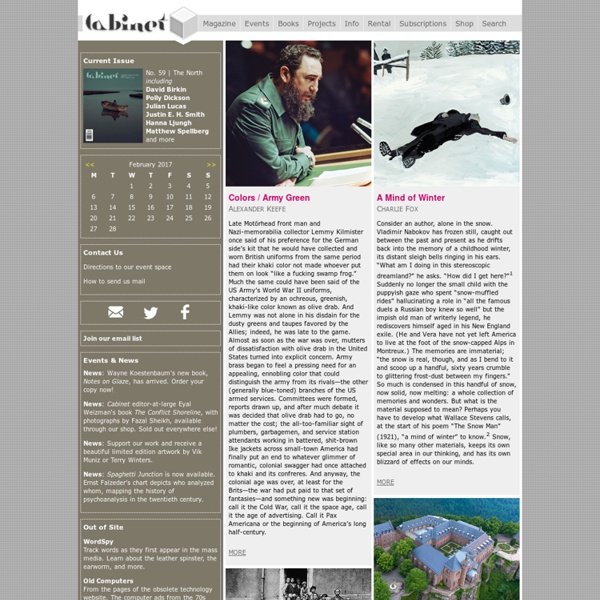



Orion Magazine SF Diggers (1966-68, beyond) What is the Digger Archives? First time here? The Overview page explains who the Diggers were (are) and the intent of this site. The What's New page highlights additions to this web so returning visitors might check there first. The old Digger Forum Discussion Group has morphed into a WordPress blog. The links on the left border show the main sections of the Digger Archives. Highlights of the Digger Archives: Videos Asymptote Theory, Culture & Society CABINET // Homepage The Liberator Magazine Mothers News back issue collection May 2010 - July 2013 click the pictures to access these issues (read online or download) via archive.org. PLEASE NOTE: Mothers News is not an online newspaper, and the following year's worth of issues will NOT be made available online. To read new issues you must subscribe, and have the physical paper mailed to you. Mothers News homepage February 2013 8 pages. January 2013 8 pages. December 2012 8 pages. October 2012 8 pages. September 2012 8 pages. the wheel, football shape, intersections, ufo morphology of the past 2000 years, school, fashion, kathryn at camp, RIP Johnny Pesky, tips & tricks: rubber bands, centerspread: UFO picture, scene report: Sukhbaatar square by Matt Zaccarino, Tinto's Invertebrate Of The Month , exclusive comics by Mickey Zacchilli, Michael DeForge, CF, Katrina Silander Clark, Brian Chippendale, Mike Taylor, Charlotte deSedouy, Charles Forsman, Kate Schapira. non-exclusive comic from Jimmy Swinnerton August 2012 12 pages. July 2012 8 pages.
An Excerpt from McSweeney’s Next Issue, Josephine Rowe Illustration: Carson Murdach Do not adjust your set. What you see before you is an excerpt from the latest issue of McSweeney’s, our alluring, laid-back, westerly sister. Curiouser still, the McSweeney’s site has an excerpt from our new interview with Geoff Dyer. Have we gone mad? All those mornings, our bodies slicked with a sugary sweat. We were inexhaustible in those final few months, throwing ourselves around every chance we got. You should think on it, said Stella, who was spending half the week as Lola. That accent. A swan dive, I guess you could call it. Sometimes I want to tell you about this, but I won’t. And she had this way of swiveling her head round like an owl to talk to you as she drove, except not like an owl because the skin of her neck creased up in folds and she looked so old when that happened, though she wasn’t, not then, and Luke would lean over and say, Watch the road, Mum. In the dark of the room I find the bar fridge, take a bottle of cola from inside the door.
Critical-Theory.com